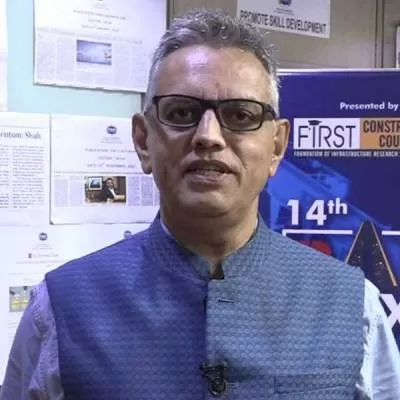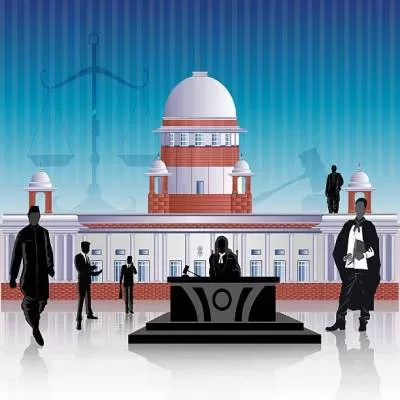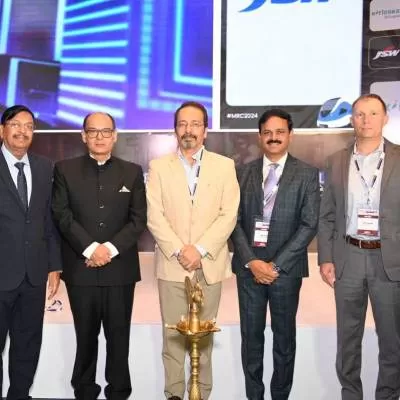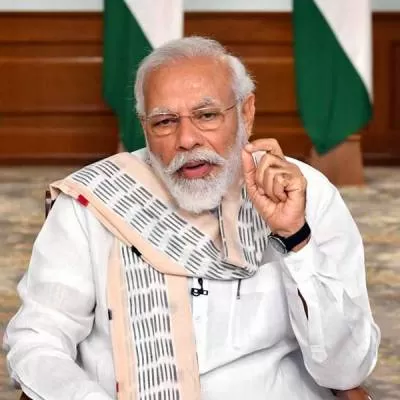- Home
- Infrastructure Urban
- ECONOMY & POLICY
- The Lure of luxury
The Lure of luxury
Over the past few months, a number of projects have been launched in the luxury and premium home segment. However, many property brokers and advisory and research firms are of the view that the sluggish economic scenario clubbed with inflation has slowed down transactions in the real-estate industry, leading to a slump in sales.
According to data from property research firm Liases Foras, new home sales fell in Mumbai, Pune, Chennai and the NCR in the June quarter but picked up in Bengaluru. Sales of luxury homes (above Rs 5 crore) in Mumbai dropped by 35 per cent, Gurgaon by 40 per cent and Bengaluru (above Rs 2.5 crore) by 20 per cent. Unsold inventory in Mumbai is up from 139.33 million sq ft in the January-March period to 146.10 million sq ft, and could take 48 months to clear. Similarly, in Delhi-NCR it is 277.31 million sq ft, which could take upwards of 36 months to reach a healthy level. The Garden City of Bengaluru too saw unsold inventory levels rise to 88.68 million sq ft, from 62.56 million sq ft in the previous quarter.
Industry perspective
Property consultants generally believe the luxury market segment has depreciated. "The overall economic scenario has drastically impacted the customers' buying," says Mudassir Zaidi, National Director- Residential, Knight Frank India. "Therefore, people refrain from going overboard with their decisions."
Admittedly, customers are not rushing to buy luxury apartments like piranhas in a feeding frenzy, but there is a growing customer base that is more discerning and selective of the real estate goodies on offer. A case in point is the overwhelming feedback received by the Lodha Group, when it made history earlier this year by achieving the world's first billion dollar pre launch for a South Mumbai project - receiving IPO style applications in excess of Rs 5,400 crore.
Late last month, the real estate developer who has made luxe his trump card launched South Mumbai's largest private landscape, The Park. Abhisheck Lodha, Managing Director, Lodha Group, is led to say, "The launch of the project, in challenging economic times, is our way of affirming our faith in the India story and our answer to sceptics. As a company, we believe that world class living is something that every Mumbaiite should experience and that is what we try to offer through our projects. And it is equally a measure of our customers' faith in our ability to deliver that they have always responded positively to our offerings." Kishor Pate, Chairman and Managing Director, Amit Enterprises Housing, a Pune-based developer, feels the overall demand for luxury housing is stable.
"Developers in the luxury home segment have an inner circle of High-Net-Worth Individuals (HNI)-buyers and investors-to which a significant number of units will be sold. Therefore, luxury housing is not prone to the negative influence of recession as the target audience operates largely with personal funds."
Realty deals
In their desire to push unsold inventories in cities like Mumbai, high-end projects launched by developers like Lodha and Indiabulls Real Estate have even been priced 10-15 per cent lower and include offerings like the 20:80 financing scheme, which allows customers to pay 20 per cent of the price at the time of booking and the remainder at the time of possession. One advantage of the scheme is that while buyers get a breathing period and don't have to bear the burden of an EMI, over and above their monthly rental till the time of possession, the developer too is able to get structured funds for project execution at the desired pace and the bank is happy about getting business too.
Elaborating on his firm's strategy, Manish Agrawal, Vice President-Marketing, Bombay Realty, says, "Since its introduction last year, 20:80 has shown some really good results. Its effectiveness can be proven by the fact that despite the existing market scenario, we are nearing the sale of almost 50 per cent of our released inventory."
However, Zaidi is strongly of the opinion that though these schemes drive sales, as the burden is much lower on the client, they are not really applicable to the luxury homes segment.
Affordable splendour
Although home sales have dipped over the past year, demand has been intact, thus encouraging the trend of smaller apartments. The prevalence of high property prices in the city and their inability to lower price per area has driven builders and developers around the country to adopt the sachet marketing strategy: building smaller size units without lowering the price per area. In the NCR, for instance, Amrapali Developers recently launched 550-sq-ft apartments. Bharat Dhuppar, CMO, Omkar Realtors & Developers, agrees with the concept of sachet marketing in the luxury segment. "To ensure that affordability is still maintained, it makes sense to reduce the size of these apartments and make the ticket size affordable," he says. "This strategy not only satisfies customers but helps developers generate the much-needed sales."
The impact of this strategy is now clearly visible. Lodha Group, for instance, has been successful in attracting buyers to the South Mumbai market because of the smaller-sized apartments on offer in its new Lower Parel project. While other builders in the same area offer luxury apartments in the range of 3,000 sq ft, Lodha has significantly cut down on ticket size. "Cutting down the overall size does have a good impact," agrees Zaidi. "It becomes more attractive for customers. As land cost and real-estate prices are reaching new highs, the cost of construction has also increased significantly. Thus, reducing the overall size is the only way out for developers."
Exclusivity quotient
Although cutting down on ticket size generates sales from customers looking for affordable luxury homes, there is a segment of customers who will settle for nothing but the most exclusive and expensive properties - marketing strategies for this segment are drastically different.
Bombay Realty has adopted a very clear strategy in targeting HNIs through the right channels. "A more personalised form of communication that includes participation in niche luxury expos, exhibitions and events are some strategies employed to market luxury projects," says Agrawal. "NRI HNIs are the key customers we target through specially designed experience centres at international real-estate expositions. Such platforms are an opportunity to discuss the project in detail with our sales team in privacy and comfort."
Therefore, one-to-one communication plays a very important role in targeting HNIs.
Bhanumurthy, General Manager, Sales and Marketing, Golden Gate Properties, affirms, "As the target audience in terms of luxury housing is very niche, marketing strategies need to be tailored accordingly. The customers from this segment need special attention."
How easy or difficult is it to market luxe properties? Lodha feels that while the marketing challenge always exists, and there is nothing easy in real estate, his emphasis as a developer is on what the city needs. "The idiom has changed. Seven years ago when we did Bellissimo people said, æWow that's luxury housing!' Now the focus has changed. They are eyeing luxury with open spaces. The delivery canvas is now even bigger."
Innovative means
In a market that is witness to cutthroat competition, developers are adopting multiple strategies to market their luxury homes - but that clearly won't be enough. Therefore, innovative marketing strategies with a mix of technology are now being implemented. This includes advertising real estate projects in the print and visual media, real estate exhibitions and communications like SMS - not to mention sops like flat discounts of Rs 50,000 on the first 100 bookings and assured return for eight months or gifts of white goods like cars and television sets. This mix enables developers and marketers to deliver efficient design and programmes. Technology is also being used smartly to enable customers to make a more informed and efficient decision. Online virtual tours work beautifully to offer vital information, such as the design and plan of a building. This not only proves useful for customers but helps developers gauge market trends effectively.
Developers in the Indian real-estate industry are adopting various marketing strategies to sell luxury homes, discovers CW PROPERTY TODAY. Over the past few months, a number of projects have been launched in the luxury and premium home segment. However, many property brokers and advisory and research firms are of the view that the sluggish economic scenario clubbed with inflation has slowed down transactions in the real-estate industry, leading to a slump in sales. According to data from property research firm Liases Foras, new home sales fell in Mumbai, Pune, Chennai and the NCR in the June quarter but picked up in Bengaluru. Sales of luxury homes (above Rs 5 crore) in Mumbai dropped by 35 per cent, Gurgaon by 40 per cent and Bengaluru (above Rs 2.5 crore) by 20 per cent. Unsold inventory in Mumbai is up from 139.33 million sq ft in the January-March period to 146.10 million sq ft, and could take 48 months to clear. Similarly, in Delhi-NCR it is 277.31 million sq ft, which could take upwards of 36 months to reach a healthy level. The Garden City of Bengaluru too saw unsold inventory levels rise to 88.68 million sq ft, from 62.56 million sq ft in the previous quarter. Industry perspective Property consultants generally believe the luxury market segment has depreciated. "The overall economic scenario has drastically impacted the customers' buying," says Mudassir Zaidi, National Director- Residential, Knight Frank India. "Therefore, people refrain from going overboard with their decisions." Admittedly, customers are not rushing to buy luxury apartments like piranhas in a feeding frenzy, but there is a growing customer base that is more discerning and selective of the real estate goodies on offer. A case in point is the overwhelming feedback received by the Lodha Group, when it made history earlier this year by achieving the world's first billion dollar pre launch for a South Mumbai project - receiving IPO style applications in excess of Rs 5,400 crore. Late last month, the real estate developer who has made luxe his trump card launched South Mumbai's largest private landscape, The Park. Abhisheck Lodha, Managing Director, Lodha Group, is led to say, "The launch of the project, in challenging economic times, is our way of affirming our faith in the India story and our answer to sceptics. As a company, we believe that world class living is something that every Mumbaiite should experience and that is what we try to offer through our projects. And it is equally a measure of our customers' faith in our ability to deliver that they have always responded positively to our offerings." Kishor Pate, Chairman and Managing Director, Amit Enterprises Housing, a Pune-based developer, feels the overall demand for luxury housing is stable. "Developers in the luxury home segment have an inner circle of High-Net-Worth Individuals (HNI)-buyers and investors-to which a significant number of units will be sold. Therefore, luxury housing is not prone to the negative influence of recession as the target audience operates largely with personal funds." Realty deals In their desire to push unsold inventories in cities like Mumbai, high-end projects launched by developers like Lodha and Indiabulls Real Estate have even been priced 10-15 per cent lower and include offerings like the 20:80 financing scheme, which allows customers to pay 20 per cent of the price at the time of booking and the remainder at the time of possession. One advantage of the scheme is that while buyers get a breathing period and don't have to bear the burden of an EMI, over and above their monthly rental till the time of possession, the developer too is able to get structured funds for project execution at the desired pace and the bank is happy about getting business too. Elaborating on his firm's strategy, Manish Agrawal, Vice President-Marketing, Bombay Realty, says, "Since its introduction last year, 20:80 has shown some really good results. Its effectiveness can be proven by the fact that despite the existing market scenario, we are nearing the sale of almost 50 per cent of our released inventory." However, Zaidi is strongly of the opinion that though these schemes drive sales, as the burden is much lower on the client, they are not really applicable to the luxury homes segment. Affordable splendour Although home sales have dipped over the past year, demand has been intact, thus encouraging the trend of smaller apartments. The prevalence of high property prices in the city and their inability to lower price per area has driven builders and developers around the country to adopt the sachet marketing strategy: building smaller size units without lowering the price per area. In the NCR, for instance, Amrapali Developers recently launched 550-sq-ft apartments. Bharat Dhuppar, CMO, Omkar Realtors & Developers, agrees with the concept of sachet marketing in the luxury segment. "To ensure that affordability is still maintained, it makes sense to reduce the size of these apartments and make the ticket size affordable," he says. "This strategy not only satisfies customers but helps developers generate the much-needed sales." The impact of this strategy is now clearly visible. Lodha Group, for instance, has been successful in attracting buyers to the South Mumbai market because of the smaller-sized apartments on offer in its new Lower Parel project. While other builders in the same area offer luxury apartments in the range of 3,000 sq ft, Lodha has significantly cut down on ticket size. "Cutting down the overall size does have a good impact," agrees Zaidi. "It becomes more attractive for customers. As land cost and real-estate prices are reaching new highs, the cost of construction has also increased significantly. Thus, reducing the overall size is the only way out for developers." Exclusivity quotient Although cutting down on ticket size generates sales from customers looking for affordable luxury homes, there is a segment of customers who will settle for nothing but the most exclusive and expensive properties - marketing strategies for this segment are drastically different. Bombay Realty has adopted a very clear strategy in targeting HNIs through the right channels. "A more personalised form of communication that includes participation in niche luxury expos, exhibitions and events are some strategies employed to market luxury projects," says Agrawal. "NRI HNIs are the key customers we target through specially designed experience centres at international real-estate expositions. Such platforms are an opportunity to discuss the project in detail with our sales team in privacy and comfort." Therefore, one-to-one communication plays a very important role in targeting HNIs. Bhanumurthy, General Manager, Sales and Marketing, Golden Gate Properties, affirms, "As the target audience in terms of luxury housing is very niche, marketing strategies need to be tailored accordingly. The customers from this segment need special attention." How easy or difficult is it to market luxe properties? Lodha feels that while the marketing challenge always exists, and there is nothing easy in real estate, his emphasis as a developer is on what the city needs. "The idiom has changed. Seven years ago when we did Bellissimo people said, æWow that's luxury housing!' Now the focus has changed. They are eyeing luxury with open spaces. The delivery canvas is now even bigger." Innovative means In a market that is witness to cutthroat competition, developers are adopting multiple strategies to market their luxury homes - but that clearly won't be enough. Therefore, innovative marketing strategies with a mix of technology are now being implemented. This includes advertising real estate projects in the print and visual media, real estate exhibitions and communications like SMS - not to mention sops like flat discounts of Rs 50,000 on the first 100 bookings and assured return for eight months or gifts of white goods like cars and television sets. This mix enables developers and marketers to deliver efficient design and programmes. Technology is also being used smartly to enable customers to make a more informed and efficient decision. Online virtual tours work beautifully to offer vital information, such as the design and plan of a building. This not only proves useful for customers but helps developers gauge market trends effectively.
























